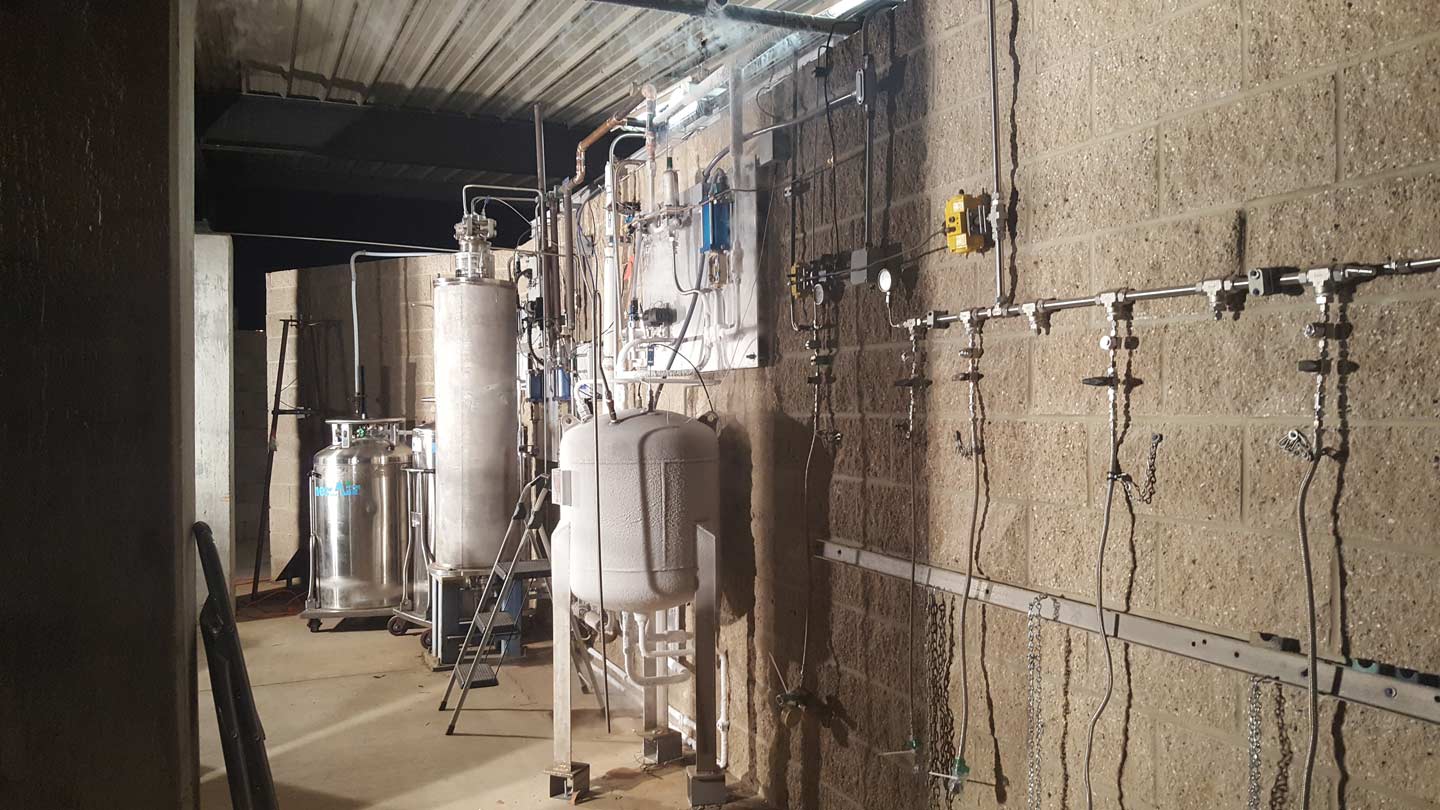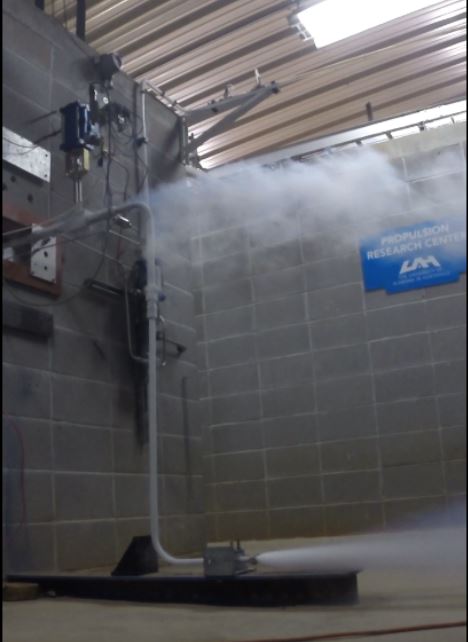
Components of the new cryogenic rocket feed systems test stand include high-pressure tanks, new flow system components, and a new digital data acquisition/control system.
The Propulsion Research Center (PRC) at The University of Alabama in Huntsville (UAH) successfully demonstrated an upgrade to the cryogenic flow capability of its Rocket Test Facility late last month. The demonstration test ran over 20 seconds using a 1,500 pounds per square inch pressurization system that exceeded the test runtime objective by 100 percent.

Cryogenic nitrogen flow demonstration at 3 pounds per second.
"This increased capability will enlarge future research opportunities on hybrid and liquid rocket engine research and technology development at the UAH Propulsion Research Center," says Dr. Robert A. Frederick Jr., center director and a professor in UAH’s Department of Mechanical and Aerospace Engineering. "The UAH team did an outstanding job of designing, assembling, and successfully demonstrating the operation of the unique system."
The upgrade was conducted in partnership with the U.S. Department of Defense’s Missile Defense Agency and incorporated high-pressure tanks acquired from Arnold Engineering Development Center, new flow system components, and a new digital data acquisition/control system.
Once the final leak checks were completed, the system was pressurized, and the team successfully demonstrated target flow capabilities with cryogenic nitrogen.
Team members included Dr. David Lineberry, Tony Hall, Vivian Braswell, Dan Jones, Joseph Agnew, the late Claire Staschus, UAH student Evan Unruh, and UAH alumnus Ben Beeker, among others.